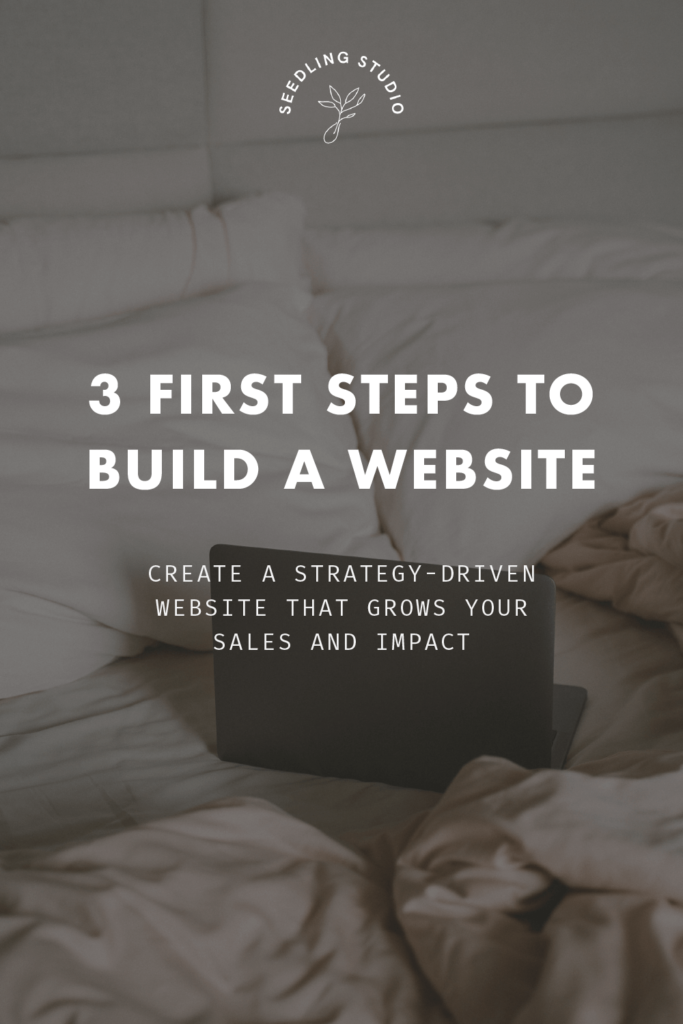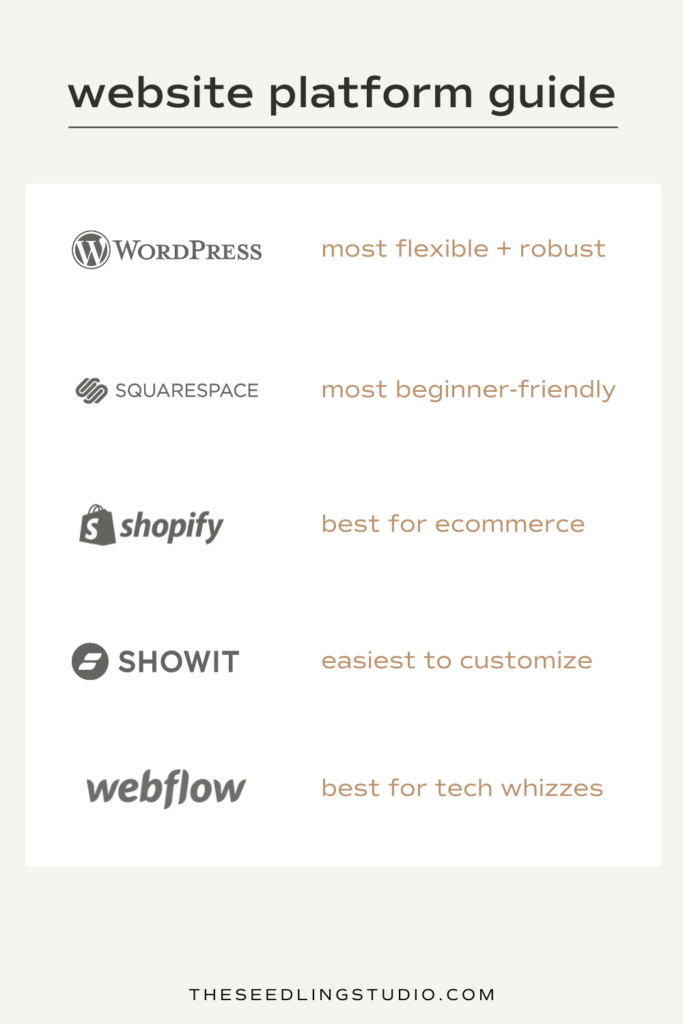You have a brilliant idea for a business, blog, or passion project, and you’re ready to get it off the ground. But then it hits you – you need a website, and you’re not a website developer!
You’re not alone – pretty much every entrepreneur hits this snag at the beginning of their entrepreneurial journey. We’ve all found ourselves asking, “How the heck do I make this online business idea a reality?”
Many people get so overwhelmed with the tech that they put off starting their business for months on end. Or, even worse, they never start their businesses at all.
Thankfully, creating a website is way easier than it was even just a few years ago. In this post, I’ll break down the first three steps to build a website that is perfect for your business.
By following these simple steps, you’ll get past those mental tech roadblocks and start making real progress toward your online business dreams.

The First 3 Steps to Build a Website for Your Online Business
It might be your first time creating a website, but it doesn’t have to be complicated!
You may be tempted to take shortcuts and choose the easiest, quickest route to website creation possible. But, before you do, I encourage you to walk through each of these steps. Doing so will make sure you get started right, so you don’t have to backtrack or completely start from scratch later on.
Step 1: Clarify Your Business Goals
I get it – you have the idea for your business, and you’re ready to get it out into the world! But before you do, it’s important to make sure you have a solid business foundation.
Why? Because if you can’t articulate what you do, who you do it for, and how you do it, your website isn’t going to do much for your business. Before you even start thinking about your color palette or which website platform you should use, make sure you have a solid vision for your business.
Be sure you have answers to the following questions:
- What do you sell? Products? Services? Some combination of these?
- What problem are you solving for your customers?
- Is there a true market need for the product or service you’re offering?
- What are your business goals for the next year? Five years? Ten years?
- What is the purpose of your website? How does this purpose tie into your business goals?
If you’re tempted to skip this part, DON’T. Out of all these initial steps to build a website, this one is arguably the most important. The answers to these questions will inform everything about your website, from its overall structure to the messaging on your pages.
Also, having a good grasp of your long-term business goals will help you make better decisions about the tools you need to help you get there.
Step 2: Decide on a Website Platform
This next step is one that tends to trip people up. There is so much conflicting information on the internet about website platforms that it can be difficult to make the right choice for you and your business.
A website platform is essentially the software you’ll use to build your website. You should decide which platform you’re going to use before you start designing your website because each platform has its own limitations.
Many web designers recommend one website platform for everybody because that platform is the only one they know how to use. Unfortunately, one single platform isn’t ideal for every business out there!
To choose a website platform that’s right for you and your business, you’ll need to consider a few different factors. For example,
- How tech-savvy are you?
- Do you have experience using any website platforms? Were those experiences positive or negative?
- What tasks will you need to regularly complete on your website?
- What level of customization and control do you want to have over your website’s design?
- What special features or integrations does your website need to have?
Every website platform has its pros and cons. To make your decision easier, you can take our website platform quiz and get paired with the perfect platform for you!
Here are some basic recommendations for choosing a website platform based on each platform’s strength:
- WordPress – Most Flexible + Robust
- Squarespace – Most Beginner-Friendly
- Shopify – Best for Ecommerce
- Showit – Easiest to Customize
- Webflow – Best for Tech Whizzes

Step 3: Plan Your Website Pages
Before you move forward and start building your website, first pause and consider whether you want to continue going the DIY route, or if it’s time to hire help. I get it – in the beginning stages of your business, you want to be as frugal as possible. But for some businesses, hiring a professional web designer could be the right move.
If you decide to do it yourself, the next step to build a website is to plan out your pages. To start, you may not need as many webpages as you think. In fact, you can likely launch your website with just four main pages.
Think about the action you want users to take on your website. Then, reverse-engineer their journey to that action.
For example, if your goal is to entice subscribers to sign up for your email list, think about the pages a user will need to visit leading to that sign-up.
Repeat this process for each one of your offers. If you need help, our free Website Strategy Guide walks you through the process of planning out every page of your website, for launch day and beyond.
There you have it – the first three steps to build a website that’s perfect for your business. If you haven’t already, put these action steps on your calendar. That way, you’ll officially overcome any lingering website overwhelm and start making real progress toward your business goals.
Remember, everyone starts at zero, but you don’t have to stay there! By breaking down your website into small, actionable steps, you’ll finally start taking action and will have a beautiful website to show for it in no time.




